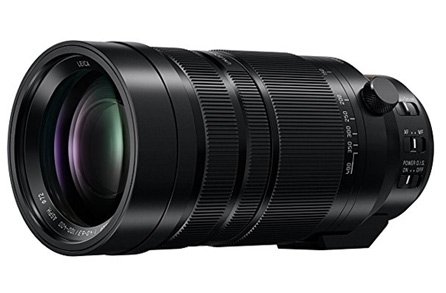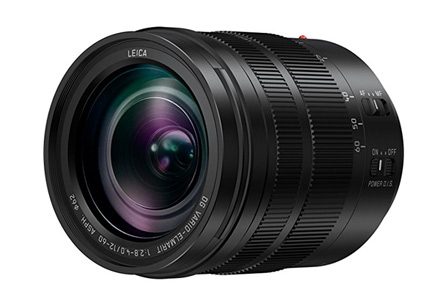For wildlife and birds, you want a telephoto lens that will get you extremely close to your subject. Sometimes, you can’t physically get closer, and in such moments you’ll appreciate every single millimeter your lens provides.
Panasonic cameras are excellent for wildlife, sports, or anything far away, due to their small sensor with a 2x crop factor. In short, it means any lens you put on will actually get you 2x closer than that same lens would on most other cameras.
Below, we’ll dive deeper into what makes a lens good for wildlife, but first let’s check out what Panasonic lenses we picked that give you the most for your money.
Table of Contents
ToggleBest Panasonic Wildlife & Birds Lenses:
Panasonic Lumix G 45-150mm f/4-5.6 Mega OIS
Panasonic Lumix G 45-200mm f/4-5.6 Power OIS
Panasonic Lumix G 100-300mm f/4-5.6 Power OIS II
Panasonic Leica DG 100-400mm f/4-6.3 Power OIS
If you decide to buy anything after clicking on our Amazon links, you automatically support us. It’s what allows us to write guides such as this one.
What’s Important for Wildlife & Bird Photography?

Here are the 6 most important factors that make a good wildlife lens. We focused on these points when selecting the lenses for this guide.
For more in-depth information read our guide on How to Select a Wildlife Lens and check out our tips on photographing wildlife.
Auto Focus – The lens needs to have fast and reliable auto focus. While this also depends on the camera you use, Panasonic’s latest mirrorless models have AF systems that can handle wildlife and action very well. Animals are constantly on the go, and even when they’re still you still need a lens that can quickly and accurately acquire focus.
Focal Length – The longer the lens, the better it is for wildlife/birds. Most of the time, you can’t get too close to the animal, which is where having the most reach helps the most. Anything over 70mm is an absolute must, whereas 200mm+ is necessary for either small animals, or animals that are really far away. Panasonic cameras have an MFT sensor with 2x crop factor, so your lenses act as if they are 2x longer (for example, the 100-300mm lens we talk about below is equivalent to a 200-600mm lens on a full frame camera). If you don’t understand this, don’t worry, we already selected the best lenses.
Aperture – All lenses on our list have apertures f/4 to f/5.6. While this is perfect for outdoors, you will definitely have to raise the ISO a bit when shooting in lower light (early morning, late day).
Weight & Size – Don’t forget that telephoto lenses are the heaviest of all. A tripod, or at least a monopod, is a must if you want to shoot for hours.
Optical Image Stabilization – OIS is nice to have, but useless in 99% of wildlife situations. OIS only helps when your subject is still! Still, every lens on our list is equipped with it.
Weather-Resistant – Many Panasonic lenses are weather-resistant which means it’s much much harder for dust, water, or any other particle to get in the actual lens. Now just because a lens isn’t sealed, it doesn’t mean a little bit of rain or dust will damage. It simply means you don’t have to worry that much when shooting in difficult weather conditions. All but the first lens on our list are weather sealed.
Panasoninc Lumix G 45-150mm f/4-5.6 Mega OIS

If you are looking for an affordable telephoto zoom for general use, the Panasonic Lumix G 45-150mm f/4-5.6 Mega OIS makes for a highly convincing option. Ultra compact and lightweight, this is a lens you’ll be happy to take anywhere. It will be of particular interest to photographers who regularly shoot nature, wildlife, sports, portraits, and travel photography.
Offering 35mm full-frame equivalent focal range of 90-300mm, this is a versatile zoom that can be used either to blow out the background behind a subject to a soft and non-distracting blur, or alternatively to flatten the perspective of more distant scenes. Seven circular aperture blades make for more pleasing out of focus rendering than with old-style polygonal diaphragms, and so, with a closest focusing distance of 3 ft. you’ll be able to shoot portraits with the subject fully isolated against a sea of swirling bokeh.
Panasonic’s optical image stabilization helps to keep images blur-free, even when shooting on longer settings. Meanwhile AF is fast and accurate – as we’ve come to expect from modern camera lenses. Otherwise, this is an excellent telephoto lens that gets the job done, and at a very accessible price.
However, anyone looking for even more impressive telephoto reach and a greater degree of durability in their lens might want to consider the Panasonic 45-200mm f/4-5.6 we talk about below. Although be warned that the extra length provided by the 45-200mm will cost you more than twice the price of the 45-150mm.
You can buy it at Amazon or see more reviews here.
Panasonic Lumix G 45-200mm f/4-5.6 Power OIS

The Panasonic Lumix G 45-200mm f/4-5.6 Power OIS lens is a mid-priced zoom for the MFT format, offering the full-frame equivalent of a 90-400mm focal range. This impressive telephoto reach makes it an ideal choice for sports, documentary, wildlife and nature photography.
On the lens barrel itself there’s a switch for manually toggling the OIS function on and off without the need to dig into the menu on your camera. And Panasonic’s Power OIS system works very well, even at the 200mm zoom setting. For moving animals, it won’t be helpful, but as soon as they stop, you’ll appreciate any extra help. Even with a tripod/monopod, you’ll still be tired after shooting for hours, and whenever you’re shooting below 1/250 you have more chances of getting blur.
Smooth aperture changes and silent AF make the lens video compatible, however the focus ring is likely not smooth enough for serious manual pull-focusing. Thankfully though, AF is impressively fast and accurate, even when tracking fast moving subjects. You can definitely count on capturing animals in their action.
The 45-200mm f/4-5.6 costs almost 3x times the price of the somewhat shorter Lumix 45-150mm f/4-5.6 above. However, for the extra money you not only get the full-frame equivalent of an additional 100mm of telephoto action, but also upgraded weather-proofing, so you can take the lens out in all but the worst conditions with total peace of mind. While the lens barrel is manufactured from plastic, it is nonetheless reassuringly well-built, and its mount is of metal construction.
You can buy it at Amazon or see more reviews here.
Panasonic Lumix G 100-300mm f/4-5.6 Power OIS II

The Panasonic Lumix G 100-300mm f/4-5.6 Power OIS II lens is a great mid-priced zoom for MFT format cameras. Providing an impressive full-frame focal length equivalent of 200-600mm, this is a versatile lens that will likely cover all your telephoto needs. Permitting you to get distant subjects large in the frame, and defocus backgrounds to a pleasing blur, it’s ideal for nature, wildlife, travel and portrait photography.
Made of lightweight but durable plastic, and fully splash- and dust-proof, this is a sturdy modern weather-proof lens that will withstand the rigors of regular outdoor wear and tear. Although highly compact for a lens offering such a degree of optical magnification, be aware that the front element does extend considerably when in use. AF is excellent, even in dim light.
The lens is overall very sharp, however it will be at its best optically when used on shorter zoom settings. It is not prone to purple fringing or flare and produces extremely attractive out of focus rendering.
The 100-300mm is much cheaper than Panasonic’s Leica-branded 100-400mm alternative. But, unlike the Leica offering, this lens does not come with a tripod collar and lacks the extra telephoto coverage of the more expensive lens. However, given that the Leica has a smaller aperture than the 100-300mm when used on longer zoom settings, and not even necessarily much better optically, the regular Lumix offering will likely satisfy most users.
You can buy it at Amazon or see more reviews here.
Panasonic Leica DG 100-400mm f/4-6.3 Power OIS

Panasonic’s Leica DG 100-400mm f/4-6.3 Power OIS lens is a beast of precision optical engineering. Offering an astounding full-frame equivalent zoom range of a 200-800mm, and impressive image sharpness, this lens will be a must for many serious photographers of nature, wildlife and sports.
Considering its enormous focal reach, the lens is surprisingly compact. Furthermore, the front element doesn’t extend or rotate when focusing. Only when zooming does the element move forward. The barrel features a switch for toggling between focus-limit settings, and others for selecting either AF or manual focusing, and for OIS. Conveniently, an Integrated rotary tripod mount allows you to rotate the entire lens and camera while it is sitting firmly on the tripod.
Both 100-400mm’s barrel and lens mount are constructed from sturdy metal, and the lens is fully splash- and dust-proof when used with weather-sealed Lumix bodies.
Center image sharpness is excellent between the 100-200 zoom settings, with a slight fall off beyond this point. Very little is detectable in the way of chromatic aberrations or distortion, and flare is well-contained.
As you might expect from a lens that comes with Leica branding and offers such a wide focal range, the 100-400mm f/4-6.3 is not cheap. Beyond this, the primary compromise of such an impressive zoom range is its slow maximum aperture, particularly when used at tele settings. Those looking for a slightly faster but correspondingly shorter option might instead consider the much cheaper Lumix 100-300mm f/4-5.6.
You can buy it at Amazon or see more reviews here.
Our Most Recommended Wildlife Lenses
Panasonic Lumix G 45-150mm f/4-5.6 Mega OIS
Panasonic Lumix G 45-200mm f/4-5.6 Power OIS
Panasonic Lumix G 100-300mm f/4-5.6 Power OIS II
Panasonic Leica DG 100-400mm f/4-6.3 Power OIS
Related Articles
Best Panasonic Lenses for Landscape in 2022
Panasonic cameras are excellent for landscape photography and traveling, thanks to their compact size and light weight. In this guide,...
Read MoreFirst and foremost, I’m a husband and father. Then professionally I’m photographer, designer, blogger, and Esty store owner. My homebase is near the stunning Wasatch mountains in Utah but I love traveling with my family as part of our homeschooling journey. I also love teaching and helping out others. My faith is one of the biggest aspects of my life and brings be a consistent joy that I haven’t found in anything else. My main blog is BestPhotographyGear.com and I strive to make photography simple for anyone looking to learn or find gear for their individual needs. By nature, I like to study, research, and analyze things and I use that help provide the best advice and reviews I can.


